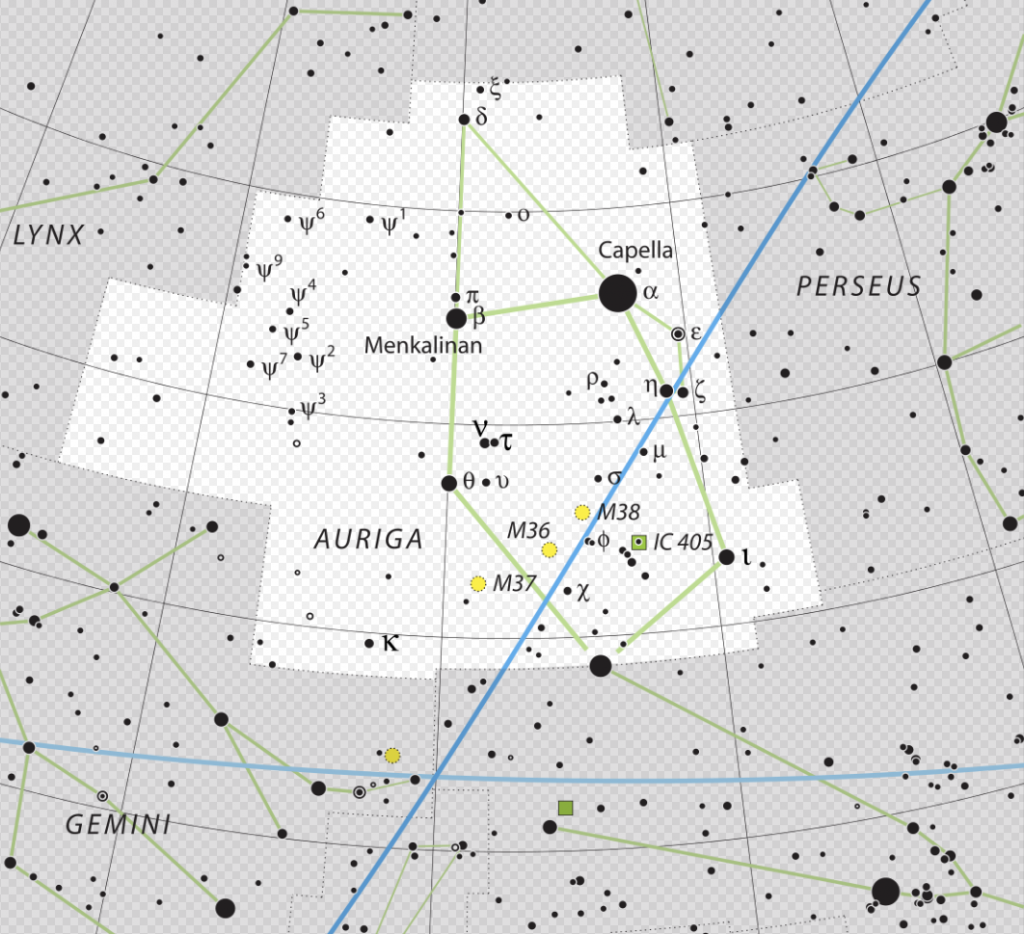| ACQUISITION | PARAMETRES ACQUISITION | |||||
| Objet | Filtres | Bin | Temps Pose | Nombres Poses | Temps Total | |
| Nom | Ic 405 | Luminance | 1 x 1 | 120′ | 0 | 0H |
| Constellation | Cocher | Rouge | 1 x 1 | 120” | 81 | 2H70 |
| Distance | 1500 al | Vert | 1 x 1 | 120” | 81 | 2H70 |
| Détail prise de vue | Bleu | 1 x 1 | 120” | 81 | 2H70 | |
| Lieu | Portugal Sud | S2 | 1 x 1 | 180” | 156 | 7H80 |
| Date acquisition | 10/11/24 au 03/04/25 | Hα | 1 x 1 | 180” | 164 | 8.20H |
| Setup | O3 | 1 x 1 | 180” | 151 | 7.55H | |
| Instrument | FSQ 106 | Totaux | 714 | 31.65H | ||
| Diamètre | 106 mm | Bias | 1X1 | 99 | ||
| Focale | 530 mm | Dark | 1X1 | 51 | ||
| Rapport F/D | 5 | Flat | 1X1 | 11 | ||
| Monture | EQ6 Pro Skywatcher | Acquisition faite par | Team ARO | |||
| Caméra acquisition | ZWO Asi 6200 MM | Traitement fait par | Team ARO | |||
| Caméra de guidage | Lodestar X2 | Logiciels utilisés | ||||
| Montage de guidage | DO Starlight X press | Acquisition | TheSkyX , Focusmax, Maxpilote | |||
| Echantillonage | 1,48 arcs | Traitement | Pixinsight, Photoshop | |||
COMMENTS ON THE OBJECT:
The Tadpole Nebula (IC 410) on the left of the Photo
IC 410, known as the Tadpole Nebula, lies around 12,000 light-years from Earth. This emission nebula is famous for its two “tadpole”-like structures, each about 10 light-years long, sculpted by the powerful stellar winds and radiation from the massive, young stars of the NGC 1893 cluster at the center of IC 410.
The Blazing Star Nebula (IC 405) on the right of the photo.
Located nearby, IC 405, or the Blazing Star Nebula, is a magnificent combination of emission and reflection nebulae. Located around 1,500 light-years from Earth, it shines with a unique blend of colors resulting from the interaction of its central star, AE Aurigae, with the surrounding interstellar material. AE Aurigae, a “wandering star” thought to have been ejected from the Orion Nebula millions of years ago, excites the hydrogen gas in IC 405, causing an intense red light emission.
